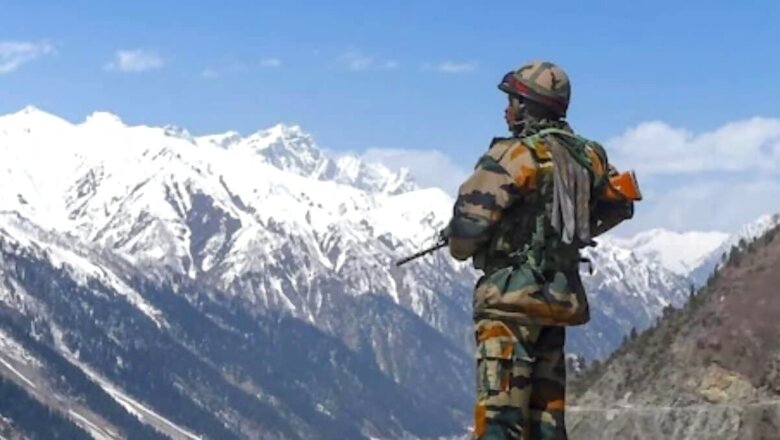
views
The bilateral relationship between India and China has been strained due to a history of China’s non-adherence to strategic agreements. And this strain has become particularly evident in 2023. The Galwan Valley clash in 2020 and subsequent incidents at the Line of Actual Control have prompted Indian forces to intensify efforts to secure the international border, especially in the eastern Ladakh sector.
Against this backdrop, the 19th round of corps commander-level talks is scheduled between the two countries on August 14, just ahead of Independence Day. The agenda includes discussions on disengagement and de-escalation, as well as deliberations on reverting to pre-Galwan clash conditions.
Despite challenges posed by higher altitudes and difficult terrain, the Indian Air Force has deployed advanced aircraft and surveillance systems to closely monitor China. Strategically positioned fighter aircraft such as Rafale, Sukhoi Su-30MKI and MiG-29 have been deployed in proximity to forward areas.
“After the Galwan incident, the Indian Air Force executed a series of operations, including fighter aircraft as well as airlift operations, and extensive surveillance activities. Since then, our strategy and deployment in the region have evolved. Today, our capabilities extend beyond fighter aircraft and helicopters. We have deployed remotely operated vehicles (ROV), radars and air warriors for electronic surveillance, intelligence gathering and real-time monitoring,” said an official on the recent developments at the Line of Actual Control (LAC).
While China continues its development activity along the LAC, the Indian forces have responded by enhancing their infrastructure and pursuing acquisitions such as the recent Predator-B deal for armed drones.
During the Galwan clash, the Indian Army held the frontline but the air force also played a pivotal role by providing backup, resources and transportation to forward areas. Approximately 68,000 army troops were airlifted to strategically important locations. Not only troops, but 330 BMPs, 90 tanks and artillery guns were successfully transported. Multiple operations were undertaken to transport more than 9,000 tonnes of supplies to these forward areas.
While the buffer zone strategy has been effective in several regions, crucial locations like Depsang and Demchok remain subjects of discussion and deliberation during commander-level talks between the two countries. Recent diplomatic negotiations have yielded no substantial progress, with both countries holding differing stances.
India remains steadfast that any resolution requires de-escalation in eastern Ladakh, whereas China appears inclined to normalise the situation and stresses on diplomatic relations.




















Comments
0 comment